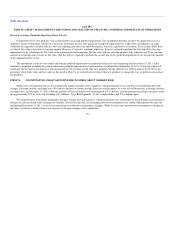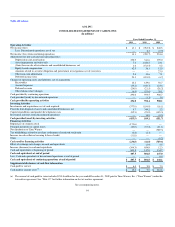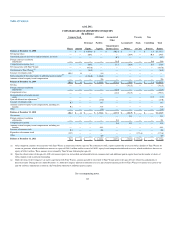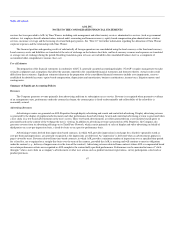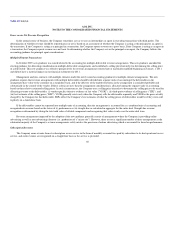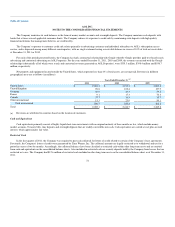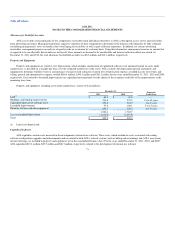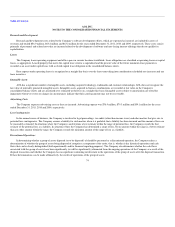America Online 2011 Annual Report Download - page 72
Download and view the complete annual report
Please find page 72 of the 2011 America Online annual report below. You can navigate through the pages in the report by either clicking on the pages listed below, or by using the keyword search tool below to find specific information within the annual report.
Table of Contents
AOL INC.
NOTES TO THE CONSOLIDATED FINANCIAL STATEMENTS
Gross versus Net Revenue Recognition
In the normal course of business, the Company sometimes acts as or uses an intermediary or agent in executing transactions with third parties. The
determination of whether revenue should be reported gross or net is based on an assessment of whether the Company is acting as the principal or an agent in
the transaction. If the Company is acting as a principal in a transaction, the Company reports revenue on a gross basis. If the Company is acting as an agent in
a transaction, the Company reports revenue on a net basis. In determining whether the Company acts as the principal or an agent, the Company follows the
accounting guidance for principal agent considerations.
Multiple-Element Transactions
In October 2009, new guidance was issued related to the accounting for multiple-deliverable revenue arrangements. This new guidance amended the
existing guidance for allocating consideration in multiple-deliverable arrangements and established a selling price hierarchy for determining the selling price
of a deliverable. This new guidance was effective prospectively for revenue arrangements entered into or materially modified beginning on January 1, 2011
and did not have a material impact on our financial statements for 2011.
Management analyzes contracts with multiple elements under the newly issued accounting guidance for multiple element arrangements. The new
guidance requires that revenue arrangements with multiple deliverables should be divided into separate units of accounting if the deliverables in the
arrangement have value to the customer on a standalone basis, and if the delivery of the undelivered items in the arrangement is considered probable and
substantially in the control of the vendor. If these criteria are met, then the arrangement consideration is allocated among the separate units of accounting
based on their relative estimated selling prices. In such circumstances, the Company uses a selling price hierarchy to determine the selling price to be used for
allocating revenue to the deliverables: (i) vendor-specific objective evidence of fair value ("VSOE"), (ii) third-party evidence of selling price ("TPE"), and
(iii) best estimate of the selling price ("ESP"). VSOE generally exists only when the Company sells the deliverable separately and VSOE is the price actually
charged by the Company for that deliverable. ESPs reflect the Company's best estimates of what the selling prices of deliverables would be if they were sold
regularly on a stand-alone basis.
If the deliverables cannot be separated into multiple units of accounting, then the arrangement is accounted for as a combined unit of accounting and
recognized into revenue based on the lower of (i) performance or (ii) straight-line as calculated in aggregate for the entire deal. Straight-line revenue
recognition is determined by taking the total sold value of all deal components and recognizing that value evenly over the entire deal term.
Revenue arrangements impacted by the adoption of the new guidance generally consist of arrangements where the Company is providing online
advertising as well as non-advertising elements (i.e., production of a "micro-site"). However, there are not a significant number of these arrangements as the
substantial majority of the Company's revenue arrangements solely involve the provision of online advertising which is accounted for based on performance.
Subscription Revenues
The Company earns revenue from its subscription access service in the form of monthly or annual fees paid by subscribers to its dial-up internet access
service, and such revenues are recognized on a straight-line basis as the service is provided.
68



